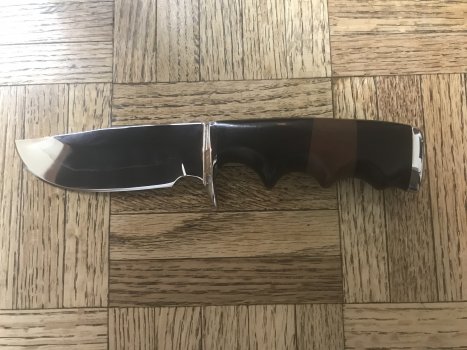52 Ford
Well-Known Member
I was looking at a Kershaw knife with a "composite" blade. 2 types of steels joined with a copper braze joint.
I was looking at the melting temp of copper and it's plenty high enough to be able to braze a blade, then do all of your heat treating. Phosphor bronze has a fairly high melting temp, too. That'd be a little stronger than pure copper braze.
The first thing that comes to my mind would be to mill a slot in the "spine" material and have a piece of the "edge" material that slots into it with maybe 10 thou clearance on the sides, shim it to get it even, then braze it up with either pure copper or phosphor bronze wire (both easy to get online).
After that, you could either forge it a little to give some sort of pattern to the braze joint, or just go straight to stock removal.
Then heat-treat as normal.
Am I missing something or do you think that'd work?
I was looking at the melting temp of copper and it's plenty high enough to be able to braze a blade, then do all of your heat treating. Phosphor bronze has a fairly high melting temp, too. That'd be a little stronger than pure copper braze.
The first thing that comes to my mind would be to mill a slot in the "spine" material and have a piece of the "edge" material that slots into it with maybe 10 thou clearance on the sides, shim it to get it even, then braze it up with either pure copper or phosphor bronze wire (both easy to get online).
After that, you could either forge it a little to give some sort of pattern to the braze joint, or just go straight to stock removal.
Then heat-treat as normal.
Am I missing something or do you think that'd work?



